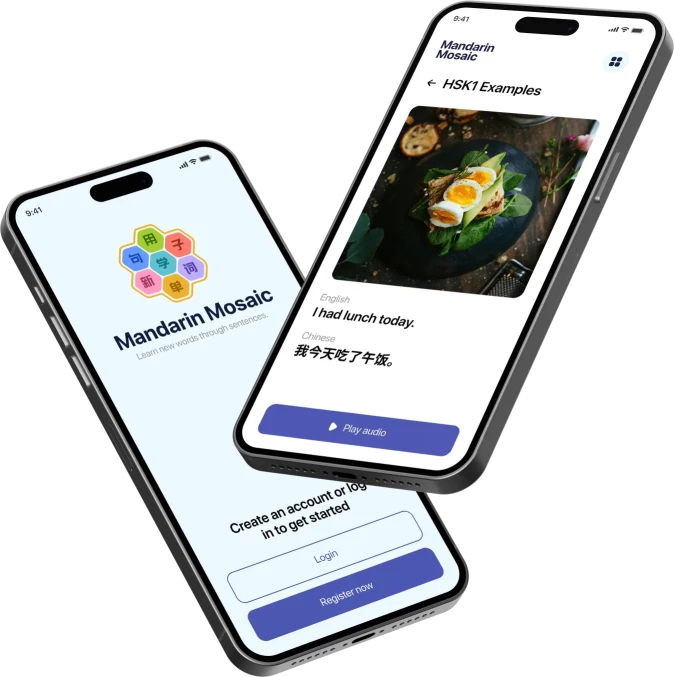Why Duolingo won't make you fluent in Chinese: The app's limitations for mastering Mandarin
Duolingo's gamified approach to language learning has made it a popular choice for those looking to pick up Mandarin Chinese. But if you're aiming for fluency, you might want to temper your expectations. While Duolingo can be a useful tool for building basic vocabulary and introducing simple phrases, it falls short of providing the comprehensive skills needed for true Chinese proficiency.

The app's bite-sized lessons and game-style environment can be engaging, especially for beginners. You'll learn how to say a few phrases and recognise some common characters, which is a solid start. However, Chinese is a complex language with tones, thousands of characters, and cultural nuances that Duolingo simply can't capture in its current format.
To truly master Mandarin, you'll need to venture beyond the confines of the app. Real-world practice, immersion in Chinese media, sentence mining and structured lessons that cover grammar and pronunciation are essential. Duolingo can be a fun supplement to your language learning journey, but it shouldn't be your sole resource if fluency is your goal.
Key Takeaways
- Duolingo provides a basic introduction to Chinese vocabulary and simple phrases
- The app's format is limited in teaching the complexities of Mandarin pronunciation and grammar
- Supplementing Duolingo with other resources and real-world practice is crucial for achieving fluency
Understanding Language Fluency and Duolingo's Role

Language fluency is a complex concept that goes beyond simply using an app. Duolingo offers a starting point for learning Chinese, but it has limitations in developing true fluency.
Defining Fluency within Language Learning
Fluency in Chinese involves more than memorising vocabulary and grammar rules. It's about communicating effortlessly with native speakers in various situations. You need to understand cultural nuances, idioms, and regional variations.
True fluency requires:
- Speaking confidently without hesitation
- Understanding spoken Chinese at natural speed
- Reading and writing characters with ease
- Using appropriate expressions in different contexts
Achieving this level takes years of dedicated study and practice. It's not something you can gain solely through a mobile app.
How Duolingo Approaches Chinese
Duolingo Chinese uses gamification to make learning engaging. Its bite-sized lessons focus on:
- Basic vocabulary and phrases
- Simple sentence structures
- Pinyin (romanisation system)
- Introduction to Chinese characters
The app's strengths include:
- Consistent practice through daily reminders
- Immediate feedback on exercises
- A gradual increase in difficulty
Duolingo introduces Mandarin pronunciation and tones, which are crucial for speaking Chinese. However, its approach is simplified compared to the complexity of the language.
Limitations of Duolingo Chinese
While Duolingo can kickstart your Chinese learning journey, it falls short in several areas:
- Limited speaking practice: You don't engage in real conversations.
- Lack of cultural context: The app doesn't delve into Chinese culture and customs.
- Simplified character recognition: It doesn't fully prepare you for reading authentic Chinese texts.
Duolingo's exercises often rely on repetition and multiple-choice questions. This method doesn't adequately develop your ability to produce Chinese spontaneously.
To become fluent, you'll need to supplement Duolingo with:
- Conversation practice with native speakers
- Immersion in Chinese media and literature
- In-depth study of Chinese characters and their meanings
Remember, Duolingo is a tool, not a complete solution for achieving fluency in Chinese.
Exploring the Components of Chinese Proficiency

Learning Chinese involves mastering several interconnected skills. Characters, pronunciation, and vocabulary form the foundation of Chinese language proficiency.
The Complexity of Chinese Characters
Chinese characters pose a unique challenge for learners. Unlike alphabetic writing systems, each character represents a whole word. You'll need to memorise thousands of these intricate symbols to achieve basic literacy.
Many characters share common elements called radicals, which can provide clues to meaning or pronunciation.
Digital input methods have made typing Chinese easier, but you still need to recognise characters to read texts.
Pronunciation Challenges in Mandarin
Mandarin's tonal system is often tricky for non-native speakers. The four main tones change the meaning of words, even if the syllables are identical. For example, 'ma' can mean 'mother', 'hemp', 'horse', or 'to scold' depending on the tone used.
Pinyin, the romanisation system, helps learners grasp pronunciation. However, some sounds in Mandarin don't exist in English, like the 'x' in 'xie xie' (thank you).
Listening skills are vital. You'll need to train your ear to distinguish subtle tonal differences in rapid speech. Regular exposure to native speakers through podcasts, films, or language exchanges can boost your listening comprehension.
Building Vocabulary Beyond Basic Grammar
Expanding your Chinese vocabulary requires consistent effort. While basic grammar concepts are relatively straightforward, mastering idiomatic expressions and colloquialisms takes time.
Measure words, a unique feature of Chinese, must be learned alongside nouns. For instance, you'd say 'yi zhang zhi' for 'a piece of paper', where 'zhang' is the measure word for flat objects.
Context is key in Chinese. Many words have multiple meanings depending on their usage. Take '打' (da), which can mean 'to hit', 'to make a phone call', or 'to play a sport', among other things.
Reading Chinese texts regularly exposes you to new vocabulary in context. Start with graded readers and gradually work your way up to authentic materials like newspapers or novels.
Additional Resources and Strategies for Mastery

Mastering Chinese requires a multi-faceted approach beyond Duolingo. Engaging with native speakers, using spaced repetition techniques, and exploring diverse language resources can significantly boost your proficiency.
The Role of Tutoring and Native Speaker Interaction
Finding a tutor or language exchange partner is crucial for improving your Chinese skills. Platforms like italki or Tandem connect you with native speakers for one-on-one practice.
Regular conversations help you grasp nuances that Duolingo Chinese can't teach. You'll pick up colloquialisms, proper pronunciation, and cultural context.
Consider joining Chinese language meetups in your area. These gatherings offer a low-pressure environment to practise speaking and listening.
Online communities like Reddit's r/ChineseLanguage can be goldmines for advice and resources. Members often share study tips and recommend courses tailored to various learning styles.
Incorporating Spaced Repetition and Associations
Spaced repetition is a powerful memory technique. Apps like Anki or Mandarin Mosaic allow you to create flashcards and review them at optimal intervals.
For vocabulary, try making associations with words you already know. Link new Chinese words to similar-sounding English words or create vivid mental images.
Use mnemonics to remember character components. Breaking down complex characters into simpler parts can make them easier to recall.
Set aside short, frequent study sessions rather than long, infrequent ones. This approach helps reinforce your learning without overwhelming you.
Utilising Language Resources Beyond Duolingo
Explore graded readers designed for Chinese learners. These books use limited vocabulary and grammar, gradually increasing in difficulty as you progress.
Podcasts like ChinesePod or Slow Chinese offer audio lessons for various skill levels. They're great for improving listening comprehension on the go.
Try HSK (Hanyu Shuiping Kaoshi) practice tests to gauge your progress. These standardised exams assess Chinese proficiency and provide structured learning goals.
Use sentence mining to enhance your understanding of sentence structures. Mandarin Mosaic allows you to study thousands of sentences, increasing difficulty gradually as you learn.
Invest in a comprehensive grammar book for in-depth explanations. Resources like "Chinese: An Essential Grammar" can clarify points that Duolingo glosses over.
Frequently Asked Questions

Many learners have questions about Duolingo's effectiveness for studying Mandarin Chinese. Let's address some common queries regarding the app's capabilities, limitations, and comparisons to other learning methods.
What level can you realistically reach with Duolingo in Mandarin?
With consistent use, you might reach an A2 level in Mandarin Chinese using Duolingo. This means you'd be able to understand basic phrases and express simple ideas.
You'd likely struggle with more complex conversations or reading authentic Chinese texts. Duolingo's focus on vocabulary and simple sentences limits your progress beyond beginner stages.
Are there updates to Duolingo's Chinese course that reflect native usage?
Duolingo occasionally updates its Chinese course, but changes are often minor. The app tends to stick to formal, textbook-style Mandarin rather than incorporating colloquial expressions.
You might miss out on current slang or regional variations. The course primarily uses Beijing-style Mandarin and simplified characters.
How does Duolingo compare to traditional study methods for learning Chinese?
Duolingo offers convenience and gamification, making it more engaging than traditional textbooks. It's useful for building basic vocabulary and recognising simple characters.
Traditional methods often provide deeper explanations of grammar and culture. They may also offer more speaking practice and writing exercises, which are crucial for Chinese.
Why isn't Duolingo considered sufficient for achieving fluency in Chinese?
Duolingo lacks comprehensive speaking and listening practice, which are essential for fluency. The app's multiple-choice format doesn't adequately prepare you for real-world conversations.
Chinese tones and characters require extensive practice. Duolingo's limited exercises don't provide enough repetition or context for mastering these aspects.
What are the limitations of using Duolingo for Chinese language study?
Duolingo's Chinese course offers limited writing practice, which is crucial for character memorisation. The app's audio quality may not clearly represent tonal distinctions.
Cultural context is often missing from lessons. This can lead to misunderstandings when using learned phrases in real-life situations.
Does the Duolingo Chinese course offer both simplified and traditional characters?
Duolingo's Chinese course primarily uses simplified characters. You won't find systematic instruction in traditional characters within the app.
This focus on simplified characters may limit your ability to read texts from Taiwan, Hong Kong, or older Chinese literature. Consider supplementing with other resources if you need to learn traditional characters.
The Mandarin Mosaic approach to learning Chinese

Want to really grasp Chinese? Mandarin Mosaic is a great Duolingo alternative. This method takes a more comprehensive approach to language learning.
Mandarin Mosaic exposes you to a much wider vocabulary than Duolingo. While Duolingo covers around 1,500 words, Mandarin Mosaic introduces you to thousands more. This broader lexicon gives you a solid foundation for real-world communication.
The key difference is context. Mandarin Mosaic teaches you full sentences and phrases as they're actually used by native speakers. You'll learn natural expressions rather than isolated words or awkward translations.
Mandarin Mosaic also incorporates a built in news reader. Reading Chinese news will help you develop a strong vocabulary as well as well-rounded language skills.
By learning with Mandarin Mosaic, you'll be better prepared for real conversations with Chinese speakers. The method's focus on practical usage means you can start applying what you've learned right away.
Read more about Mandarin Mosaic on our home page and download today to start using the only specialised sentence mining app for Chinese.

